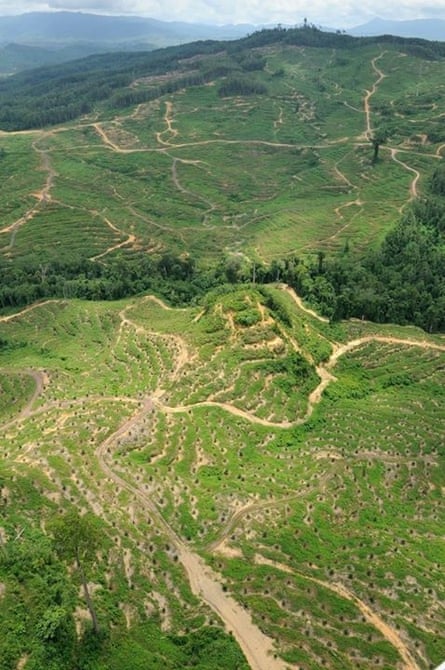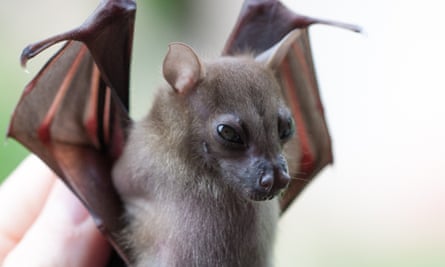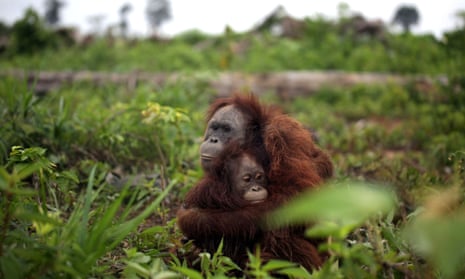Have you ever thought about what it’s like for the animals and birds living in a forest when it’s cleared to make way for a palm oil plantation? It’s similar to finding your home being demolished brick by brick.
First the loggers come in and take away trees of commercial value. Species such as the orangutan, which rely on tree cover, will retreat to the forest boundaries, perhaps venturing out into the logged forest while there are still remnants of habitat left.
After the loggers come the diggers. The heavy machinery ploughs the rest of the forest much like an arable field, clearing any remaining vegetation before preparing the ground for the oil palm trees.
This clearing process can take as long as two years, during which time much of the forest’s wildlife will disappear. “The thing about deforestation is that it doesn’t kill animals, it kills trees. Therefore the animals that are mobile will go somewhere,” explains Rob Ewers, an ecologist at Imperial College London.
The exodus creates a “crowding” affect, where the remaining fragments of forest or steep slopes that cannot be logged become flooded with wildlife seeking refuge. However, these fragments are not usually large enough to support all the wildlife that inhabited the forest. After an initial surge in biodiversity, most of the species either move, starve or die, says Ewers.

On average, just 15% of the species recorded in primary forest are found in oil palm plantations. But what if these forest fragments were expanded or redesigned to encourage more species to survive and migrate through palm oil landscapes? For the past five years, Ewers has been leading a study called the Safe project to answer this question. With a team of researchers on the island of Borneo, Malaysia – one of the most biodiverse regions in the world – he is studying the impact of different types and sizes of forest fragments on wildlife populations.
With the support of a major palm oil company, Malaysia-based Sime Darby, which Ewers says has no involvement in the study, the researchers have been given exclusive access to a forest site being cleared for palm oil conversion. They are assessing the impact of different types of forest fragments, including continuous patches of forest, so-called wildlife corridors, that allow wildlife to move in and out of plantations.
With additional access to an unlogged forest site and a palm oil plantation site being cleared without fragments as control sites, the total land area encompasses 8,000 hectares (an area larger than Manhattan), making it one of the world’s biggest ecological experiments.
“We know it [the conversion of forest into palm oil plantations] is bad, but the caveat here is that young palm oil sites are a lot worse than older ones. As they age, plantations become better for biodiversity,” Ewers says, especially in comparison with a landscape of intensive soy or maize production in Brazil.
“What we’re trying to see is if you can avoid dropping off a cliff in terms of biodiversity by redesigning plantations with wildlife corridors and forest fragments,” he adds.
So far Ewers and his team have found birds, insects, frogs and native rodents on older plantations and even a leopard cat that liked coming into the plantation to eat rodents. “Most of these, apart from maybe the rodents, are compatible with the oil palm and, in the case of birds and bats, are actually good at controlling insects,” Ewers says.

Lessons for the palm oil industry
The most important thing Ewers and his team are trying to discover is what additional wildlife they can maintain in forest fragments, and what impact the scale and distribution of those fragments will have on biodiversity levels.
“Will dotted fragments of forest or wildlife corridors along a stream be enough to promote the movement of animals across a plantation landscape?” Ewers asks, pointing out that “a one hectare fragment may be enough for a beetle, but not an orangutan”.
While Ewers and his team don’t expect larger species such as elephants to ever be compatible with oil palm plantations, they still hold out hope of attracting species such as the sambar deer. “All of it depends on how they react to their habitat being surrounded by noisy plantations with trucks rumbling past and humans working,” says Ewers.
Whatever the final conclusions – the team is halfway through the 10-year study – Ewers is hopeful that the findings will be taken on board by the palm oil industry. Executives from Sime Darby have visited the site, he says, and seem enthusiastic to embrace the findings as they push their sustainability credentials.
The lessons need not only apply to new plantations either, with some companies looking to improve biodiversity on their existing sites to gain accreditation for certification schemes such as RSPO.
“A lot of palm oil plantations developed without certification,” says Ewers. “It is not clear if they can retrospectively gain certification by doing habitat restoration, but some are now actively trying to take a step back and restore some parts of the historic biodiversity.”

Comments (…)
Sign in or create your Guardian account to join the discussion